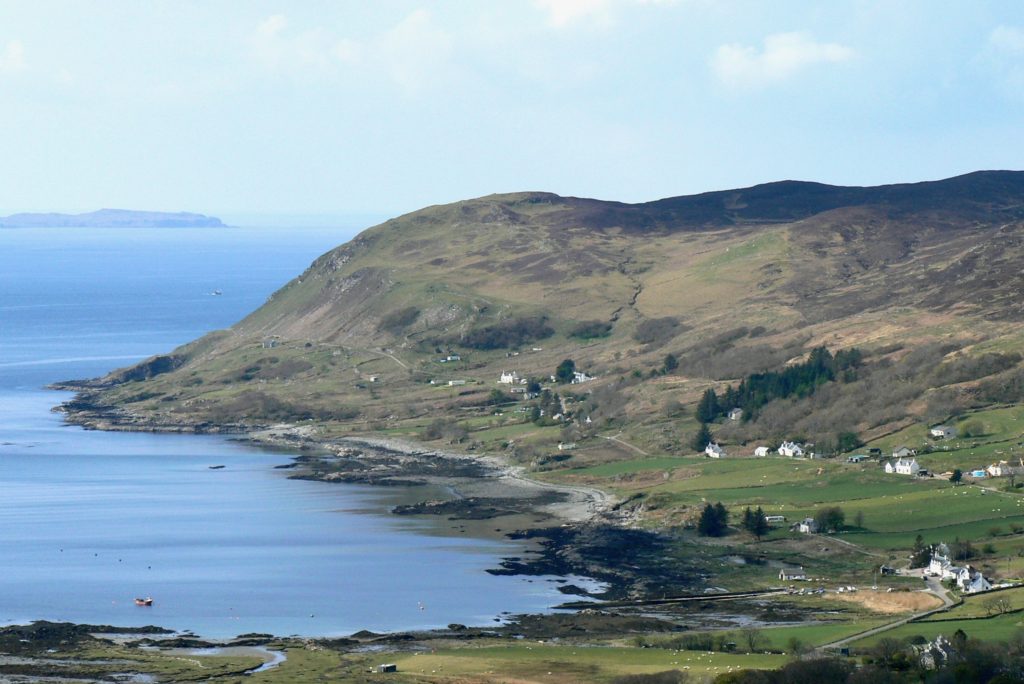
Under an ancient arrangement in the West Highlands and Islands, the land of Ardnamurchan was divided by the clan chief between his people. They lived in small settlements, and worked the surrounding arable land communally, each family also having access to extensive rough hill land called the ‘common grazings’. In 1806, Ardnamurchan was divided between 31 settlement holdings.
This system was disrupted from 1828 onwards by the clearances. While some settlements, such as Camas nan Geall and Bourblaige, were emptied of their people and the land taken over by the landlord, mainly for use for extensive sheep farming or deer stalking, others were reorganised into crofting townships. In these, tenants were allowed to build a house in a small area of arable land and given continued access to the old settlement’s common grazings. Although this system was designed to force tenants to find a cash income to pay their rents, either by working away for periods of each year or by finding paid service locally, it left them exposed to eviction at the whim of the Estate. The key to the survival of the crofting system was the 1886 Crofters’ Holdings (Scotland) Act, which gave security of land tenure to crofters and produced the first Crofters Commission, a land court which ruled on disputes between landlords and crofters. As a result, the crofting system survived, so many of Ardnamurchan’s crofts are still worked today.
Three of Ardnamurchan’s townships, Glendrian, Torr na Moine and Bourblaige, are sufficiently important to have been designated as national scheduled monuments. While Torr na Moine and Bourblaige were both cleared, Glendrian was turned into a crofting township and continued to be worked into the early 1940s, after which is was finally abandoned. Of the remainder, some, such as those at Mingary, Coire Mhuilinn, Ormsaigbeg, Ormsaigmore and Kilchoan, have been lost when they became crofting communities, while others, such as Kilmory, Achosnich and Achnaha, were integrated into new townships on their sites.
